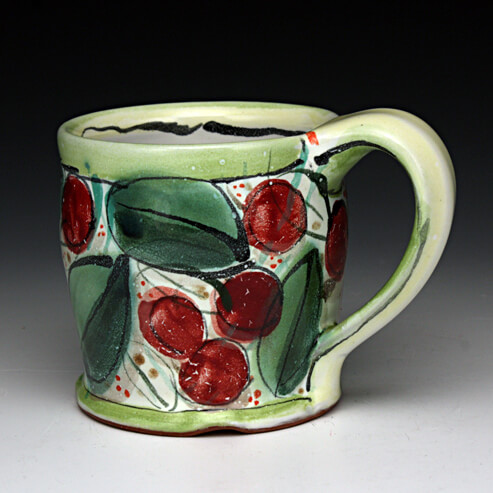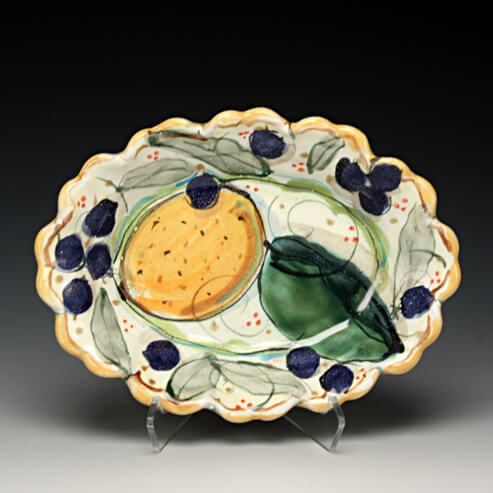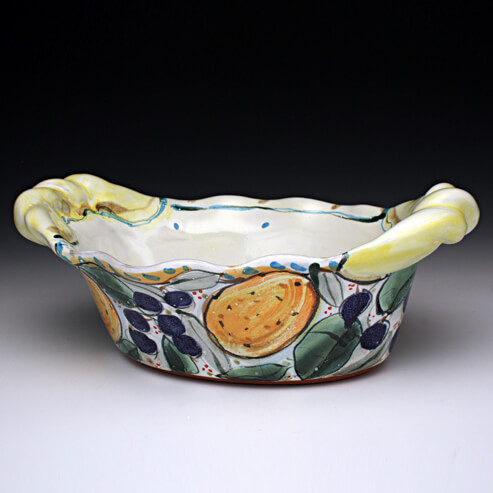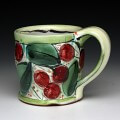
Ann Tubbs graduated cum laude with a B.F.A. from Wittenberg University , and has an M.F.A. in printmaking/lithography from Michigan State University. She was one of the founding teachers of The Upland Hills School in Oxford , Michigan , taught ceramics at Western Connecticut State College, and was on the Board and has taught at the Brookfield Craft Center in Brookfield, Connecticut.
For the past nineteen years, she has been living with her son and husband in the Toledo/Ann Arbor area, where she has her own studio. She makes sculptural, as well as functional ware, and her exhibits include the juried Michigan Potters’ Association shows (third place, 1983; fourth place, 1985), Toledo Museum of Art May Show, Toledo Botanical Gardens’ Crosby Festival, and “Women in the Arts”, Images Gallery, Toledo, Ohio. Two pieces are included in the ongoing show of professionally outstanding women ceramists: “The Ceramic Collection”, Southern Connecticut State University, in New Haven. In 1991, in an exchange with the potters of Monroe, Michigan ‘s sister city of Hofu, she was one of three potters whose work was chosen to be sent to Japan. A photograph of one of the pieces from her “boy/dog” series, with a brief statement, is included in Richard Zakin’s book Ceramics, Mastering the Craft, and a photo of one of her clay garden notebooks is in his Hand-formed Ceramics. Her work is also included in the English potter Jane Perryman’s book, Smoke-fired Pottery, and in the collections in The Best of Pottery, by Robin Hopper.
The functional pottery which I now make is done in a mid-range, cone 3 stoneware, made, at the moment, from my mixing of a commercial clay body with a clay body I have formulated, and mix, myself. This clay, fired to a higher temperature than most maiolica, is a dense, less porous clay which bonds well with, and will not cause the maiolica glaze to chip or craze. This higher temperature maiolica is somewhat of an anomaly, since most work of this type is in the lower temperature range, and, though more colorful, is less durable. The pieces, themselves, are formed with the use of the wheel, slab roller, and hand tools, and bisqued to cone 06 before glazing and decorating. The glaze, which I also mix, is a cone 3 white or cream maiolica, and the colorants, mixed with a frit, a gum and a macloid (the Walter Ostrom method), are brushed onto the glaze in its dusty, pre-fired stage. The decoration is a little like working with watercolors on blotter paper. The frit aids with the fusion; the gum, with ease of brush work; the macloid, with suspension. Once decorated, the pieces are then fired in an oxidizing atmosphere in a large, electric kiln, over a period of 17 hours. Cooling takes another day and a half. My son, Peter, for one of his high school projects, planted a large, bricked-path garden near my studio, with interesting flower and vegetable variants, many of which have inspired my decoration. My family and I have also visited both France and Italy (to see a nephew and his family), and more recently, Finland and Russia , where I have done many drawings, and looked at many pots. The clay notebook series is also an outgroth of the gardening, and of more worldly ideas. Made with porcelain or stoneware fired to the bisque temperature, the work is then cold-smoked, and painted and assembled. These are some of the cumulative results of almost thirty years of looking, drawing, and of working in clay.








